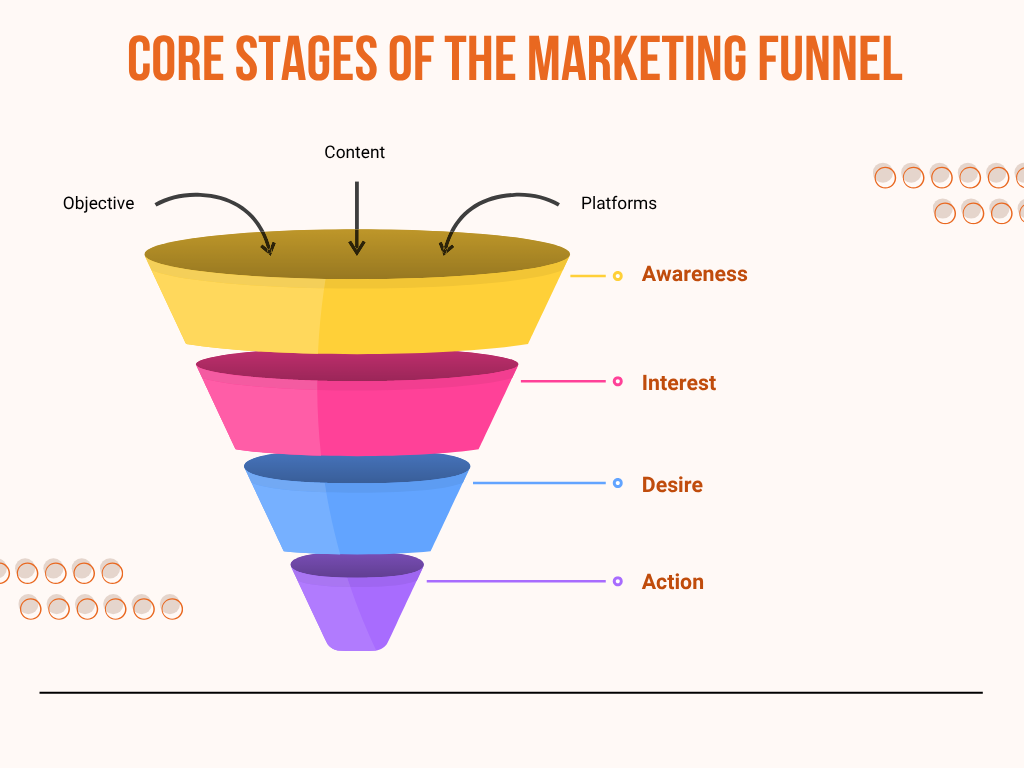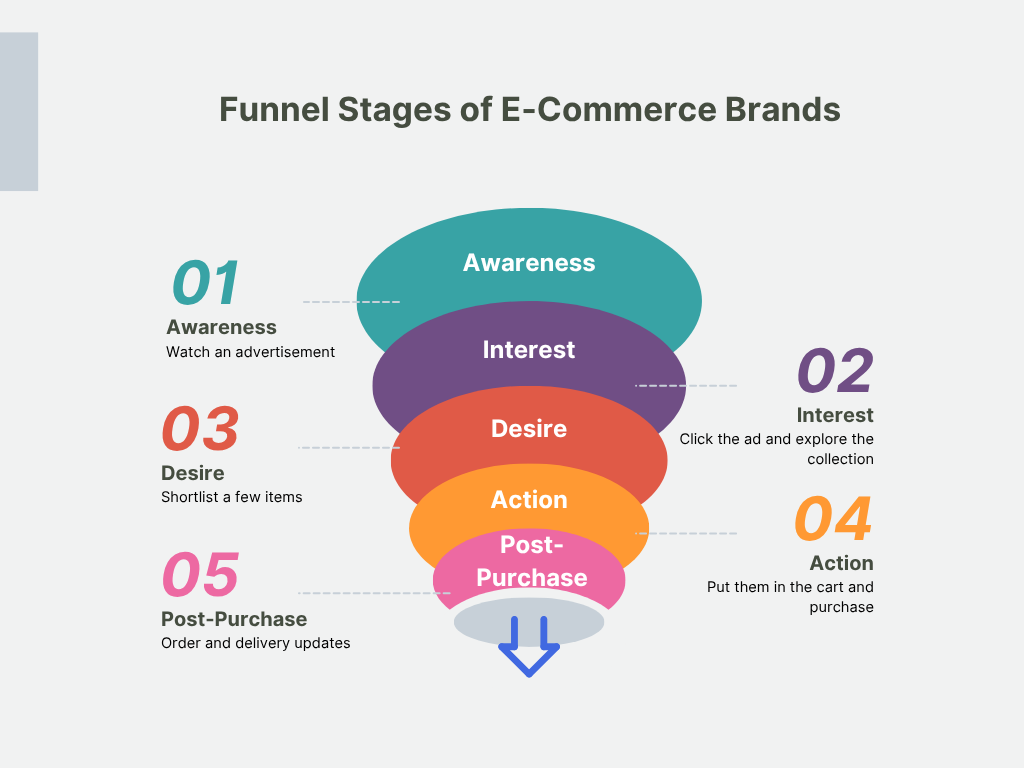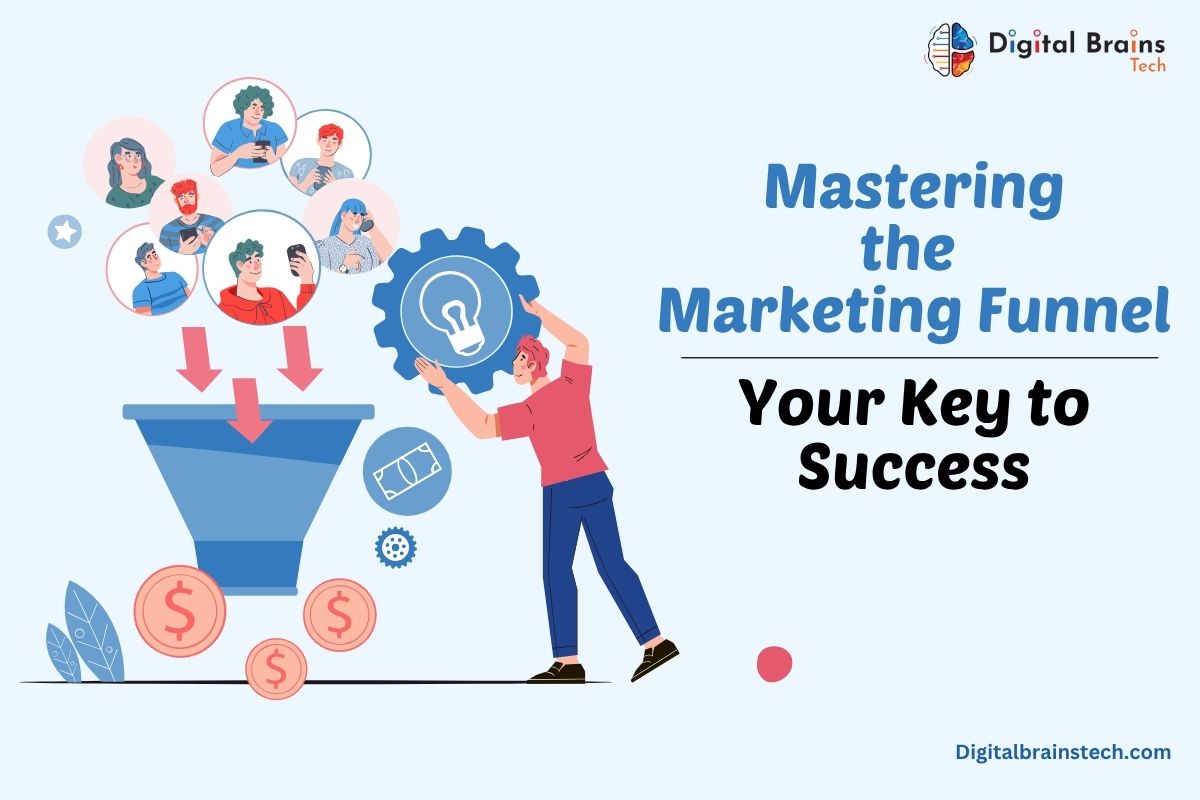The world is running because of customers. We are all customers in one sense or another. From buying healthy food at grocery stores to finding the best educational videos on the internet, we are purchasing something every day, multiple times.
How do you interact with a brand? Have you ever churned on this? Why do you like the services of one company, and why doesn’t another excite you at all?
To study your behavior with a brand, there is a comprehensive concept known as the marketing funnel.
The blog explains the definition, core stages, and provides actionable strategies for each. You will also learn how to measure your success. Stay tuned!
What Exactly is a Marketing Funnel?
A marketing funnel allows marketers to understand where buyers are in their journey. It is a strategic framework that outlines the journey of potential customers, from end to end. It means from discovering your brand to making a purchase. It’s a structured study that simplifies a complex customer journey into a manageable workflow.
Are you curious about the shape of the concept funnel?
The apt answer is that not every customer who becomes aware of a brand will eventually buy from it. For example, you hear about the best doctors for a certain disease. You take services from only one after researching multiple options. The framework is important to ensure that the brand reaches customers across different potential paths to purchase.
Significance of Marketing Funnel for a Business
The Marketing Funnel lays the foundation of a business’s success by structuring key components of gaining potential customers by
- Attracting
- Engaging
- Converting
Marketing funnel of a business is a multi-stage process that helps you to diagnose problems, refine your marketing strategy, and ultimately drive greater sales. Eventually, it allows you to foster lasting customer loyalty.
Core Stages of the Marketing Funnel

AIDA Model that Defines Marketing Funnel
(Awareness, Interest, Desire, Action)
Most of the successful and the best digital marketing companies in the USA, use the AIDA model to create targeted strategies.
Awareness:
You were casually scrolling and suddenly came across an advertisement that was telling about a digital marketing course. The video shows how the course turned a beginner into an expert in digital marketing. You are keen to learn digital marketing, so the ad catches your eye immediately.
“Wow, the guy seemed to be very confident and successful from learning the course from this institute.”
Interest:
You click on the ad and visit the landing page of the advertisement. You go through the details of the course: what they cover, read about the faculties, their experience, duration, and fees.
“The course looks comprehensive and crafted as per today’s industry updates.”
Desire (also known as Consideration):
You imagine yourself standing on a stage with a mic in your hand, sharing your success story like him.
“I really want to join the course from this digital marketing institute. The course seems to be just made for me.”
Action (also known as Conversion):
You click on “Submit Your Request,” enter your details, and complete the purchase.
“Can’t wait to begin the course.”
Expanding the Stages of the Funnel
Many marketers explain the marketing funnel into three major stages: Top, Middle, and Bottom (TOFU, MOFU, BOFU). But we are going to discuss five stages.
Let us understand what user behaviour differentiates them.
- Top of the Funnel (TOFU): This corresponds to the Awareness stage of the marketing funnel (A from AIDA). TOFU focuses on prospects who have just become aware of a problem that a brand can solve.
- Middle of the Funnel (MOFU): This aligns with Interest (I) of the marketing funnel, where prospects are looking for a solution to the problem identified in TOFU and consider their options.
- Bottom of the Funnel (BOFU):The bottom of the funnel combines Desire and Action. Here, the prospects decide on a solution and become customers.
Many successful brands usually add two stages to the marketing funnel. They believe that the AIDA model needs those two stages to be completed, as the ways of nurturing long-term relationships are missing. So, they add-
- Loyalty: As the name suggests, the customer becomes loyal to your brand and repeatedly buys from you. What leads to it? A seamless purchase experience along with high-quality service/product.
- Advocacy: When the customer actively recommends your brand to other people, it is called the advocacy stage.
Marketing Funnel Strategies Table
| Funnel Stage | Goal | Key Strategies |
|---|---|---|
| TOFU (Top of the Funnel) | Build Awareness |
|
| MOFU (Middle of the Funnel) | Generate Interest & Build Trust |
|
| BOFU (Bottom of the Funnel) | Drive Action & Conversions |
|
| Loyalty | Encourage Repeat Business |
|
| Advocacy | Turn Customers into Brand Promoters |
|
Measure Your Success with Marketing Funnel Metrics
The marketing funnel is a vital tool for a brand that helps it guide people in knowing about it and covers the journey of becoming its loyal customers.
Here, assigning the metrics to do the job successfully is the key, because every brand knows the concept. But are they all able to achieve the success they want?
The reason is identifying weak areas and fixing leaky funnel issues. The exact metrics will depend on your specific strategy and business model (discussed below). Most of these metrics can be tracked using tools like Google Analytics, Google Search Console, Ahrefs, and Semrush.
- Top of Funnel (TOFU) Metrics:
- Keyword Rankings (TOFU)
- Users/Unique Visitors
- Impressions
- Click-Through Rate (CTR)
- Engagement
- Completion Rate (for videos)
- Organic Traffic
- Middle of Funnel (MOFU) Metrics:
- Monthly Subscriber Growth Rate
- Star Ratings
- Keyword Rankings (MOFU)
- Time on Page
- Bounce Rate
- Detail Page Views
- New-to-Brand Percentage
- Branded Search Index
- Bottom of Funnel (BOFU) Metrics:
- Conversions
- Return on Investment (ROI)
- Keyword Rankings (BOFU)
- Return on Ad Spend (ROAS)
- Advertising Cost of Sales(ACOS)
- Customer Acquisition Cos(CAC)
- Orders or Units Sold
Your Business Model Defines Your Funnel
While the exact number of stages can vary depending on the model, the most common frameworks provide a clear roadmap for the customer journey.
Funnel Stages of SaaS Brands–
- Awareness: Leads learn about the software through advertisements or other forms of marketing content.
- Interest: Want to know more about the software hence Visit the website and explore its features in detail.
- Consideration: Sign up for a demo.
- Evaluation: Talk to the salesperson and also compare it with competitors.
- Purchase: Buy a subscription.
- Onboarding: Learn the effective usage of the software.
- Retention: Regular updates, customer engagement, and support.
- Advocacy: Give positive reviews about the software and also refer it to others.
Funnel Stages of E-Commerce Brands-

- Awareness: Watch an advertisement.
- Interest: Click the ad and explore the collection.
- Desire: Shortlist a few items.
- Action: Put them in the cart and purchase.
- Post-Purchase: Order and delivery updates.
Important Considerations for Your Marketing Funnel
How can one leverage the best outcomes through the correct implementation of the concept of the marketing funnel? Let us see below-
B2B vs. B2C Marketing Funnels
The basic idea of the marketing funnel stays the same, but how it works is a bit different for B2B and B2C:
B2C (Business-to-Consumer): Here, brands sell to individual people. The company might never speak to the customer directly. Customers usually buy after asking their friends or family.
B2B (Business-to-Business): A company is a customer in B2B. More people are involved in making the decision. For example, team leads and finance heads. These buyers usually talk directly to your sales team before making a choice.
The strategies vary according to the target audience. So, what strategy you use at each stage is important.
Read Content That Converts: B2B Content Marketing Examples, ROI & Lead Generation
Marketing Funnel vs. Sales Funnel
Do you also believe that the marketing funnel is the same as the sales funnel? Understand the key differences between these two. The main aim of the marketing funnel is to get attention, build awareness, and turn visitors into leads. On the other hand, the sales funnel turns leads into actual customers (loyal customers, though).
Yes, you are thinking correctly.
When marketing and sales teams work together, the best achievements can be experienced.
Final Thoughts: Keep Improving Your Funnel
From people to customers,
From leads to loyal,
From understanding to buying,
Marketing funnel is a customer journey.
What must you remember always?
- The funnel is eternal.
- The internet is always evolving
- Changes in customer habits are constant.
- keeps changing, and so do customer habits
What must you practice?
Stay flexible. Keep exploring, measuring, and adjusting your strategies.
FAQs
Q1. Why marketing funnel?
- It is used to ease the marketing efforts of a brand after they come to know how the customer is interacting and behaving with their brand.
Q2. What are the other names of the marketing funnel?
- It is also known as customer funnel, or conversion funnel, purchase funnel, sales funnel, and buyer funnel.
Q3: Why is the AIDA model important in marketing?
- The AIDA model is a timeless strategy that helps marketers understand how to move a potential customer from initial awareness to making a decision. It provides a clear structure for crafting effective marketing campaigns that convert.
Also Read SCO Marketing: An Important Step in Online Marketing




